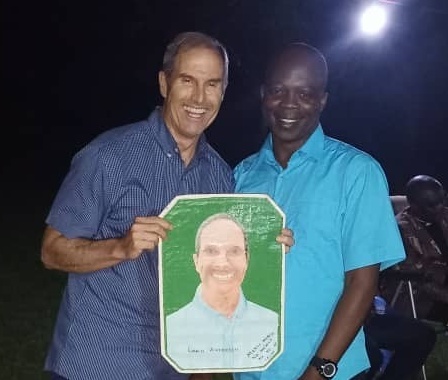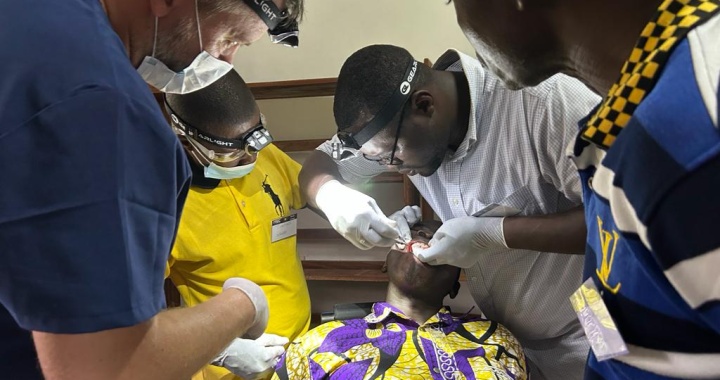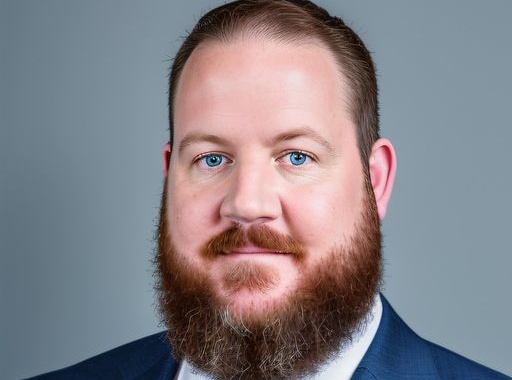This past May, a three-member Emergency Medicine (EM) Medical Ambassador team from the Paul Carlson Partnership served six days in the small village of Loko, located in the far northwest Democratic Republic of Congo (DRC). Their goal? To support Congolese doctors and nurses with a systematic approach to implement, monitor, and maintain a highly effective emergency medicine practice. Working beside the Congolese physicians and nurses at Loko Hospital, the team provided the first of three training modules with a systematic approach to implementing such care. This training will be followed by equipping them with training materials to bring this program to their sister hospitals.
Jerry Oliaro DO, a 25-year practicing emergency medicine physician who had visited the area three years prior to teach trauma care, led the team in May which consisted of himself, Karen Dominguez NP, and Steve Schorer MD. They brought with them 150 pounds of much needed supplies and medicines to support the current needs at the hospital. Considerable observation and discussion with the Loko doctors and nurses occurred prior to teaching. It was incumbent upon the team to clearly understand the Congolese culture, values, resources, and health improvement opportunities. Once understood, the team developed the training modules which consisted of lectures, skills labs, critical care protocols, and operational strategies.
One such training taught Congolese doctors and nurses how to gain alternative, emergent vascular access—essentially an IV when the veins don’t cooperate. The IO (interosseous) line procedure is designed to drive a needle into the bone marrow of the tibia (lower leg bone) just below the knee cap. Once established, you can push any medications or fluids through this access, just like a peripheral vein IV, and it never fails.
In order to simulate the hard bone, bone marrow cavity, and red bone marrow fluid, they used the natural compartments of a green bamboo stalk. The interior compartment was filled with a red solution made from a red plant dye material. The green bamboo proved to be the right density to simulate a child’s bone, thus the force necessary to place the IO line. The students were able to confirm they had entered the ‘bone marrow’ space by aspirating ‘blood’ (the red dye solution). Schorer said, “It certainly exceeded our expectations to simulate the actual procedure and the doctors and nurses loved it. Sheryl Noren, a nurse and Covenant missionary in Congo, has given us follow-up on the fact that they have successfully used this procedure a few times since the team left.” Not only were these educational sessions designed for effective learning but effective teaching—since these students will become the teachers.”
As they reflected on their time in Congo, the EM team noted, “the Congolese physicians and nurses are highly motivated and inspiring. Their operational intuition for improving efficiencies was exact and effective, and their communication and interpersonal skills were encouraging. Because their passionate need to serve each other is so great, the team of doctors and nurses were open and eager to learn from one another regardless of education level or authority ranking. Their collaboration was refreshing, powerful, and highly effective!”
The EM Ambassadors believe the success hinges on effective communication throughout the process. Therefore, quarterly internet meetings have been established with the medical director, Dr. Bosco, to review developing needs, status of program implementation, and performance metric reports. So as not to lose that essential personal relationship, the EM Ambassador team will add a fourth member, allowing for two 2-member teams. As the EM team works closely with the Congolese team, the goal to reach all five hospitals with emergency medical training now seems possible.
Thank you for supporting medical work through Paul Carlson Partnership! Learn more about the Medical Ambassador program, or contact us if you have questions about how to get involved.
The PCP Medical Ambassadors raise support for their travel, training materials, and medical supplies for their Congolese colleagues. If you would like to help them purchase these supplies and materials, you can learn more about their upcoming trip and how to donate. (Due to specific needs and weight limitations, we can only accept monetary donations). Merci mingi!



I feel like all your ideas are incredible! good article helped me a lot.